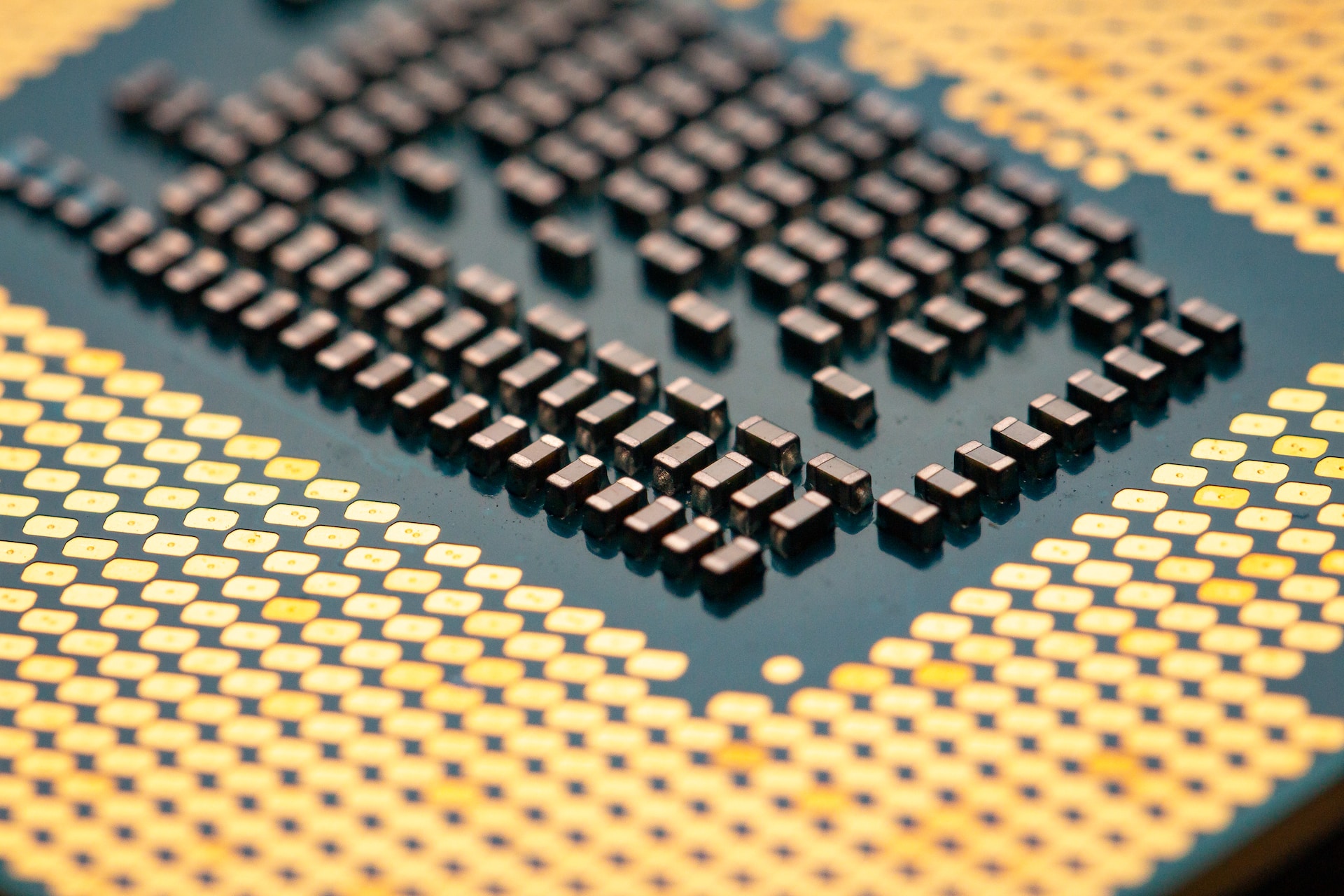Apple is getting ready to launch its next-generation silicon processor, the M3 chip, at its ‘Scary Fast’ event on October 30, 2023. The M3 chip will power the new Macs, such as the MacBook Pro and iMac, and offer amazing performance and efficiency improvements over the previous M-series chips. In this article, we will tell you everything you need to know about the upcoming M3 chip and what it could mean for the future of Apple’s devices.
What is the Apple M3 Chip?
The M3 chip is Apple’s custom-designed processor that will replace the Intel and AMD chips in its Mac computers. The M3 chip is based on the same architecture as the A16 chip that will be used in the iPhone 13 and iPad Pro models. However, the M3 chip will have more cores, more memory, and more features than the A16 chip to handle the demanding tasks of Mac users.
The M3 chip is part of Apple’s M-series family of processors, which started with the M1 chip in 2020. The M1 chip was a huge success, as it delivered faster performance, longer battery life, and better compatibility with iOS apps than the Intel chips. The M2 chip, which was released in 2021, improved on the M1 chip by adding more CPU and GPU cores and higher clock speeds.
The M3 chip will be a bigger leap than the M2 chip, as it will use a new 3-nanometer production process that will make it more powerful and efficient than ever before. The M3 chip will also have different variants for different Mac models, such as the M3 Pro, M3 Max, and M3 Ultra.
How Fast is the Apple M3 Chip?
The exact speed of the Apple M3 chip is not known yet, but we can make some estimates based on the rumors and leaks. According to Bloomberg’s Mark Gurman, the most powerful variant of the M3 chip, the Ultra, will have a 32-core CPU and up to an 80-core GPU. That’s twice as many cores as the current M2 Ultra chip, which powers the Mac Studio and Mac Pro.
To put that into perspective, here are some possible specifications of each variant of the M3 chip compared to their predecessors:
| Variant | CPU Cores | GPU Cores |
|---|---|---|
| M2 | 8 (4 high-performance and 4 efficiency) | 10 |
| M2 Pro | 10 or 12 (6 or 8 high-performance and 4 efficiency) | 16 or 19 |
| M2 Max | 12 (8 high-performance and 4 efficiency) | 30 or 38 |
| M2 Ultra | 24 (16 high-performance and 8 efficiency) | 60 or 76 |
| M3 | 8 (4 high-performance and 4 efficiency) | 10 |
| M3 Pro | 12 or 14 (6 or 8 high-performance and 6 efficiency) | 18 or 20 |
| M3 Max | 16 (12 high-performance and 4 efficiency) | 32 or 40 |
| M3 Ultra | 32 (24 high-performance and 8 efficiency) | 64 or 80 |
As you can see, the base M3 chip will have the same number of cores as the M2 chip, but it could offer better performance per core and memory configurations. The M3 Pro chip will have more CPU and GPU cores than the M2 Pro chip, as well as higher clock speeds. The M3 Max chip will have a whopping 16 CPU cores and up to 40 GPU cores, making it a beast for graphics-intensive tasks. And finally, the M3 Ultra chip will have an incredible 32 CPU cores and up to 80 GPU cores, making it a monster for professional workloads.
Based on these specifications, we can expect the M3 chip to offer significant improvements in performance over the previous generation of chips. For example, according to Geekbench scores, a popular benchmarking tool for measuring processor performance:
- The average single-core score for an Intel Core i9-11900K processor, one of the fastest desktop CPUs from Intel, is about 3000.
- The average single-core score for an AMD Ryzen Threadripper PRO 3995WX processor, one of the fastest desktop CPUs from AMD, is about 2800.
- The average single-core score for an Apple A15 Bionic processor1, which powers the iPhone 13 models, is about 1700.
- The average single-core score for an Apple M2 Ultra processor1, which powers the Mac Studio and Mac Pro, is about 2000.
Based on these scores, we can estimate that the M3 chip could have a single-core score of around 2900 or higher, putting it in the same league as the Intel and AMD CPUs. This means that the M3 chip could offer comparable or even better performance than the best desktop CPUs on the market, while also being more energy-efficient and compact.
What are the Benefits of the Apple M3 Chip?
The Apple M3 chip will not only make the Macs faster but also offer other benefits that will enhance the user experience and functionality of the devices. Some of these benefits are:
- Longer battery life: The M3 chip will use a new 3-nanometer production process, which will result in more transistor density and lower power consumption. This means that the M3 chip will be able to run faster and longer without draining the battery. According to reports, TSMC’s 3-nanometer technology could offer up to 35 percent better efficiency than the 5-nanometer technology used in the current M-series chips. This could translate to several hours of extra battery life for the Macs.
- Better graphics: The M3 chip will have more GPU cores than the previous generation of chips, which will improve the graphics performance and quality of the Macs. The M3 chip will be able to handle high-resolution displays, advanced gaming, video editing, 3D rendering, and other graphics-intensive tasks with ease. The M3 chip will also support new features such as ray tracing, which is a technique for creating realistic lighting and shadows in 3D graphics.
- More compatibility: The M3 chip will be compatible with iOS and iPadOS apps, as well as macOS apps. This means that users will be able to run their favorite apps from their iPhones and iPads on their Macs, without any loss of functionality or performance. The M3 chip will also support universal apps, which are apps that can run on both Intel and Apple silicon Macs. This will make it easier for developers to create and update apps for both platforms.
- More features: The M3 chip will have more features than the previous generation of chips, such as more memory, more cache, more security, and more neural engines. These features will enable the M3 chip to perform tasks such as machine learning, encryption, face recognition, speech recognition, and more with greater speed and accuracy. The M3 chip will also support new technologies such as Wi-Fi 6E, which is a faster and more reliable version of Wi-Fi.
Which Macs Will Use the M3 Chip?
The M3 chip will power Apple’s new Macs that will be unveiled at the ‘Scary Fast’ event on October 30. The event is likely to focus on devices that use the higher-end variants of the M3 chip, such as the MacBook Pro and iMac. Apple is also testing the M3 Ultra chip in an unreleased high-end MacBook Pro that is codenamed “J514”. Here are some of the Macs that could use the different variants of the M3 chip:
| Variant | Macs |
|---|---|
| M3 | MacBook Air (13-inch and 15-inch), MacBook Pro (13-inch), Mac mini, iMac (24-inch) |
| M3 Pro | Mac mini, MacBook Pro (14-inch and 16-inch) |
| M3 Max | MacBook Pro (16-inch), iMac (27-inch or larger), Mac Studio |
| M3 Ultra | MacBook Pro (16-inch or larger), iMac (32-inch or larger), Mac Pro |
The new Macs that will use the M3 chips are expected to offer significant improvements in performance, battery life, graphics, and thermal management over their predecessors. They could also feature new designs, displays, ports, keyboards, and accessories that would enhance their functionality and user experience.
Conclusion
The M3 chip is set to be Apple’s next big leap in silicon technology, which could give it a competitive edge over other PC makers and chip makers. The M3 chip could offer unprecedented levels of performance and efficiency for Apple’s devices, while also enabling new features and capabilities that were not possible before. The ‘Scary Fast’ event on October 30 will reveal more details about the M3 chip and its potential impact on Apple’s ecosystem. Stay tuned for more updates on this exciting topic.





